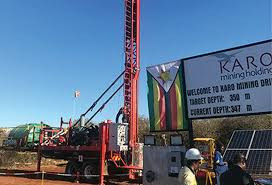
latinum Project, which is slated to become a significant global source of Platinum Group Metals (PGMs), is advancing on Zimbabwe’s Great Dyke, but the undertaking now demands a higher financial commitment and a longer funding period. The estimated peak capital expenditure (capex) for the open-pit mine has increased by 6.45% to US$546 million, marking an increase from the previous US$512.9 million projection released in April. This cost escalation, primarily driven by higher infrastructure, engineering, and processing expenses, has led Karo Mining Holdings—a subsidiary of the JSE/LSE-listed Tharisa Plc—to seek an extension for its bond listed on the Victoria Falls Stock Exchange (VFEX).
Related Stories
The necessity for the increased capex to bring the project to its production stage was confirmed following an Independent Competent Persons’ Report. While the initial report had foreseen robust revenues of US$2.74 billion, the updated cost structure reflects the current operational realities. The project, located approximately 85 kilometers southwest of Harare, began construction in December 2022. Despite a partial slowdown in 2024, partly attributed to the prevailing low commodity pricing environment, Karo has made substantial progress, committing US$178 million of the capex by July. Key construction and procurement achievements highlight the project’s maturity: Civil construction is 80% complete, and 90% of long-lead mechanical and electrical items have been procured and stored. Crucial infrastructure, including bulk water and electrical power, is secured. Furthermore, design and engineering work is complete, a PGM pilot plant has been commissioned to optimize the commercial concentrator plant, procurement stands at 70% complete, and fabrication works are 37% complete.
With the project's timeline indicating that the first ore in mill is now expected 15 months after financial close, Karo Mining Holdings is proposing two significant amendments to its VFEX-listed bond to harmonize financing with the extended construction schedule. Firstly, Karo is seeking to extend the bond’s tenor by three years to December 1, 2028, a necessary step as the bond was originally scheduled for redemption on December 1, 2025. Secondly, the company proposes increasing the interest rate on the notes to 11% per annum from 9.5% per annum. This proposed coupon rate increase is explicitly designed to compensate bondholders for the longer tenor and to account for the increased cost of funding in the Republic of Zimbabwe since the bond’s issuance in 2022. These proposals will be subject to a vote at an extraordinary general meeting of bondholders scheduled for November 7 this year. The project is an 85%-owned subsidiary of Karo, with the government’s special purpose vehicle, Generation Minerals, holding the remaining 15%.
Once fully operational, the Karo Platinum Project is set for a long operational life. The 10-year first phase will involve open-pit mining, targeting an annual production of approximately 220,000 ounces per annum (220kozpa) of PGMs at steady state. Following this, underground mining is projected to sustain the life of mine, which is expected to exceed 50 years. Karo maintains strong confidence in the project's long-term economic viability, emphasizing its strategic entry point into a global market grappling with supply deficits, especially given the concentration of existing PGM supply in South Africa and Russia. The company notes that this project is one of two new, significant PGM projects advancing globally. While PGM prices are currently trading below historical norms, the long-term forecast is highly favourable. Karo references market intelligence, including JP Morgan analysts who have suggested that platinum could reach c.US$2,000/oz in the mid-2020s, with potential for even higher prices by 2040 under sustained deficits.


















Leave Comments